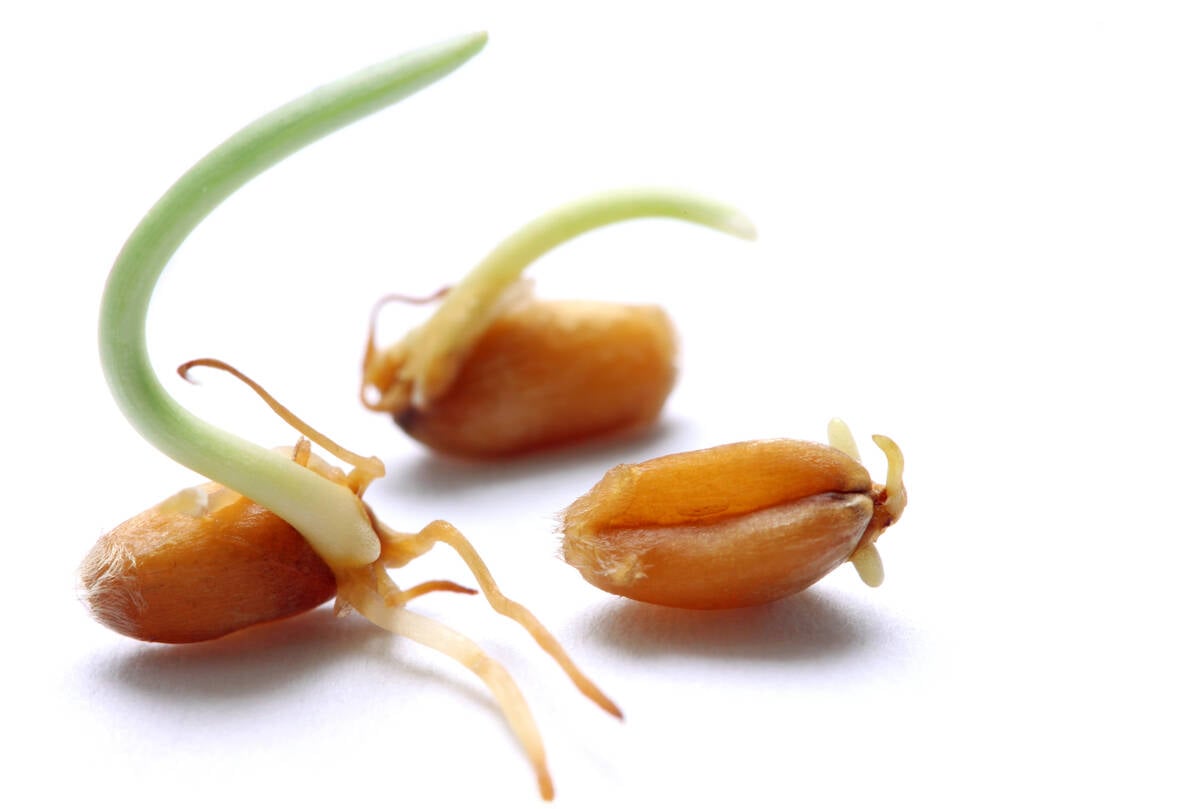First drought in the west, now flooding in the east – Australian farmers haven’t had much luck this year.
But production problems down under are good news for Canadian wheat, durum and malting barley prices.
The latest Pool Return Outlook from the Canadian Wheat Board has posted increases everywhere, but particularly big gains for high quality product.
The board recommended increases to initial prices after its October PRO. Now the recommendation will be higher, said Don Bonner, board market analyst.
“They will be substantial increases in some cases.”
Read Also

Manitoba farmers fight sprouted wheat after rain
Rain in mid-September has led to wheat sprouting problems in some Manitoba farm fields.
For example, there is now a $72.50 per tonne difference between the initial payment and the PRO for No. 1 durum with 11.5 percent protein. There is a $65 per tonne difference between the initial for Standard Select two-row designated barley and the PRO.
Bonner said the full impact of heavy rain in New South Wales in Australia has yet to be determined. But the damage should be substantial.
“Australia grows white wheats which are generally more susceptible to sprouting so it doesn’t take a lot of moisture to downgrade a crop,” Bonner said.
In addition to the Australian situation, there were problems seeding the United States winter wheat crop.
“A lot of the (U.S.) crop went into the ground late. There still is concern for the crop because the temperatures they’ve had down there the past two or three weeks have been a fair bit cooler than normal and there wasn’t a lot of early growth. So it is not as well established as it normally would be.”
Australia’s weather problems have also hurt its malting barley production, although the biggest malt barley state, South Australia, has not been harmed and has started harvest.
“But a big portion of their crop has been taken out of the picture. Any further problems will make the malting barley situation quite tight,” said Bonner.
Canada’s malting barley crop also has problems and rain at harvest in the European Union downgraded its barley cro-10-P. Eastern Europe is buying most of what remains in the EU.
The various harvest weather problems around the world have also shortened the supply of high protein durum wheat.
“The U.S. market has really taken off for choice durum. We are reflecting that in our price outlook and there is the potential for it to go higher if the market stays strong like this.”
For example, the PRO for No. 1 durum with 14.5 percent protein jumped $38 a tonne.
However, No. 1 durum with 11.5 percent protein rose only $5 a tonne.
As for the key North African market, it is too early to say how its durum crop will fare. After last year’s drought, this year’s crop is being seeded into better moisture, Bonner said.
“It is something we’ll be watching over the next few months.”
The board will also be watching the Argentine wheat crop, which is starting to be harvested. It did have some heavy rain recently but not enough to do much damage. But more rain will affect its quality.














